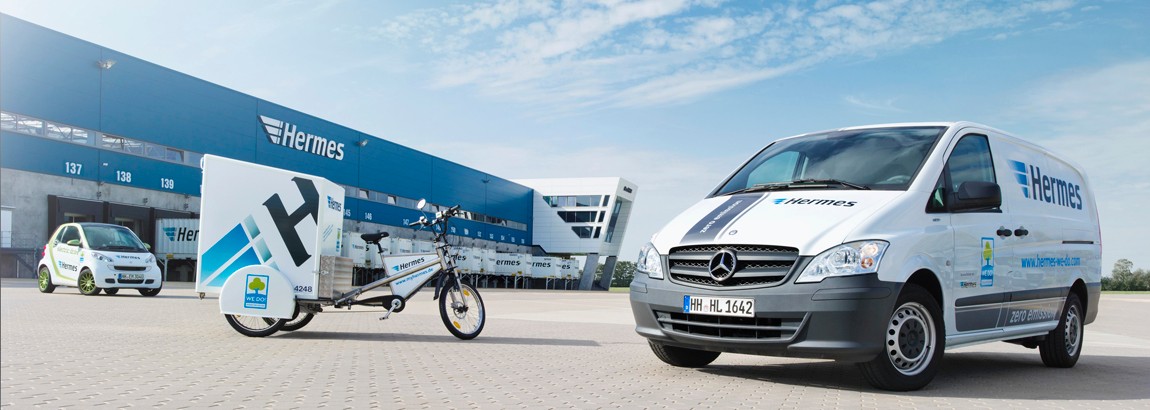We get it done: Optimal network planning at Hermes
Whether it’s silk from Asia, furniture from Poland or a private parcel sent from one end of Berlin to another: Networking – creating connections between people and markets – is Hermes’ core business.
Of course, organising flows of goods that are the equivalent of several million tonnes of freight or more than 500 million parcel shipments every year, and doing so quickly and safely, requires a lot of resources.
The goal of green logistics from Hermes is to minimise the resulting effects as much as possible and to use every opportunity to reduce CO2 emissions. This is a pledge that we also honour in our network planning.
For Hermes, this effort begins at the very beginning of the value chain. Thus, suppliers, like those from Asia, are locally evaluated by Hermes – OTTO International using high international standards and must meet criteria such as those of the Business Social Compliance Initiative. Many of of Hermes Hansecontrol’s testing institutes are right where a large portion of the goods are produced: in Asia, specifically in China and India. Tests to ensure the quality of goods destined for Europe or the United States can therefore be more or less conducted on-site. This ensures a greater level of security for retailers as well as consumers, better transit speeds and fewer returns and complaints – resulting in noticeably fewer shipments on the road.
Of course, conserving resources is also the idea behind Hermes’ capacity management project. The trucks bearing the Hermes logo cover more than 200 million kilometres a year in Europe alone. Sophisticated IT systems make it possible to know the status and locations of more than 7,500 swap bodies and trailers, which can then be digitally represented and directed while on long-haul journeys. Extra trips and empty runs can thus be prevented and traffic jams avoided. At the same time, the software also provides data on the CO2 emissions for each tour, which are then provided to Hermes customers free of charge. That’s because at Hermes, swap bodies and trailers are equipped with GPS units that can transmit information up to 720 times in a 24-hour period. These units are solar-powered, of course.
GPS is also used in shipment tracking. This not only applies to large retail and industrial customers, but also to Hermes Einrichtungs Service (HES) two-man handling, which delivers, assembles and connects 3.5 million large items such as cabinets and washing machines every year. The company’s own software generates the optimal route and calculates arrival times. The customer can then follow the delivery in the Internet minute by minute, with the final delivery time being specified down to a 20-minute window. The first advantage of this system: The customer doesn’t have to wait. The second advantage: If it is possible to complete the delivery at the first attempt, a unnecessary trip can be avoided later, which helps the environment.
The same motivation is behind the services that Hermes Germany (HG) offers. First, the ParcelShop network consisting of 14,000 sites must deserves mention. The fact that the shops are often within walking distance results in 30 percent less CO2 emissions than direct delivery to the doorstep. But new services are also intended to reduce CO2 emissions. Business customers can schedule delivery on a desired day, with a choice of four time windows, as well as additional services that increase the comfort level when recieving a parcel – and they can offer this service to their customers. Hermes customers can also use myHermes.de to find out when they can expect delivery of their shipment. This information helps customers to better integrate the delivery into their daily routine. Of course, this also reduces travel distances which in turn reduces CO2 emissions. This is made possible by software that Hermes developed itself that incorporates extensive historical process data as well as the experiences of Hermes delivery personnel into its calculations. The program is fed with new data from long distance shipments and last mile deliveries on a daily basis. It then compares all of the relevant data, establishes correlations and finally predicts a time window that is exact down to an hour. This means that, once again, customers wait less and unnecessary trips are avoided, which only helps the environment.
